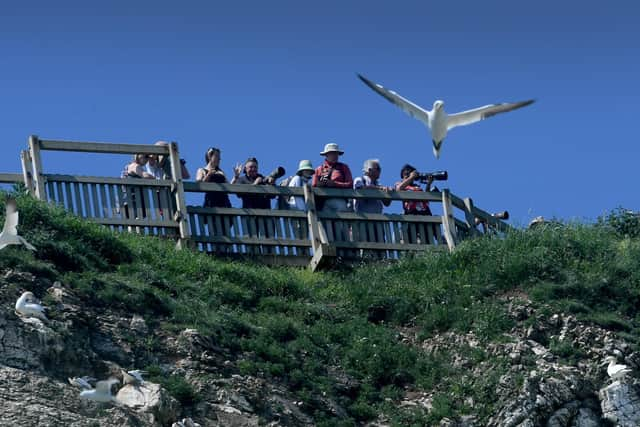RSPB Bempton Cliffs: Bird flu strikes Yorkshire coast but hopes of immunity in some seabirds whose eyes have changed colour
The gentle-looking gulls are among half a million seabirds which gather every year at Bempton Cliffs to raise their young.
In the last five years numbers have fallen from 51,000 pairs to 44,000 pairs, making the discovery of dead birds - 34 were spotted on Monday - a cause for concern.
Advertisement
Hide AdAdvertisement
Hide AdIt comes after an outbreak last year was thought responsible for the deaths of hundreds of the reserve's largest inhabitants, northern gannets, which pair for life and return to the same nest site from West Africa every year.


Site manager Dave O'Hara said: "We've been doing daily checks, staff and volunteers to see if it would reoccur and we had seen a couple of birds who potentially had flu.
"Last week we saw a few more dead kittiwakes, they are birds that have been gathering mud or social gathering at the top of the cliff - that's where we think they are transmitting infection.
"There was 34 on Monday and people are seeing them and we thought we should make the announcement that unfortunately bird flu is here again - although they haven't been tested as they are inaccessible.
Advertisement
Hide AdAdvertisement
Hide Ad"Sadly bird flu looks like it's here on the Yorkshire coast, but thankfully it is the end of the season and there are relatively low numbers."
Mr O'Hara said there had been reports up and down the East Coast, including on the Isle of May, Firth of Forth and St Abbs of deaths, adding: "When we saw the first one or two last month we were really worried that it would escalate quickly before the birds finished nesting.
"They still have to get over the line - there's a bit of an arms race going on between birds successfully fledging chicks and bird flu not increasing."
Ironically the reserve is expecting its best breeding season in years with lots of nests boasting two chicks. And there’s also hope that immunity may be spreading with gannets returning to their nests including some whose eyes have turned from blue to black – a phenomenon seen elsewhere in birds that have recovered from avian flu.
Advertisement
Hide AdAdvertisement
Hide AdOf the 55 gannets Mr O’Hara monitors on one plot 11 have black eyes. “It doesn’t appear to affect birds in terms of their eyesight,” he said. "There was a worry that it might affect their reproductivity – a kind of ‘long’ bird flu.
"But we have a number of black-eyed gannets with chicks which is positive and we’re hoping that there is now a certain amount of the population which had the bird flu last year and survived.
"But it’s still early days while the kittiwakes have started to leave the cliffs and the guillemots are mostly gone back to sea, the gannets will still be with us until the end of September, to early October.”
